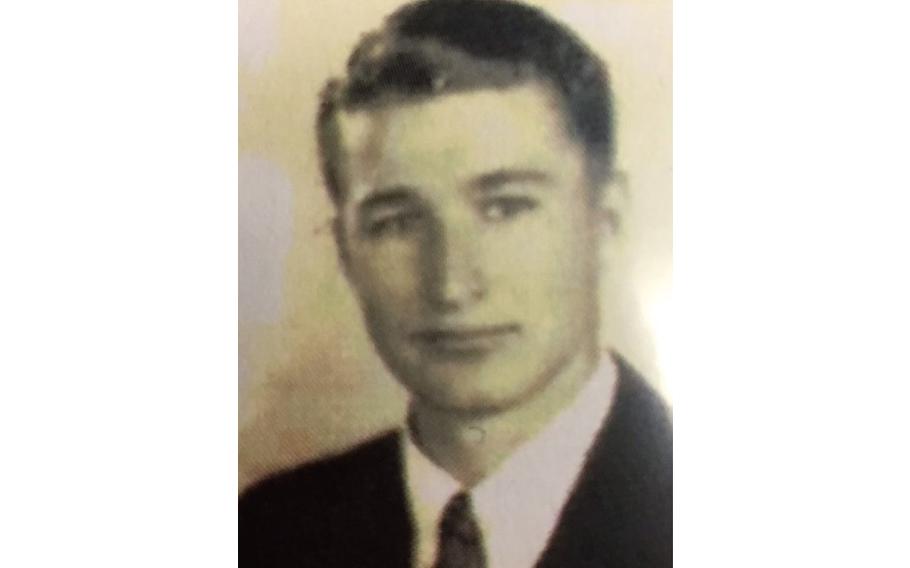
Fireman First Class Raymond Ralph Camery was killed Dec. 7, 1941, in the Japanese attack on Pearl Harbor. After more than 80 years, his remains will be interred July 20, 2023, in Honolulu. (Defense POW/MIA Accounting Agency)
(Tribune News Service) — Raymond Ralph Camery of Modesto, Calif., was presumed dead aboard a ship attacked at Pearl Harbor in 1941. Eight decades later, DNA samples have confirmed it.
The U.S. Navy will bury Camery with full honors Thursday in Honolulu. It is part of the military's effort to put a name to every service member killed in action, no matter how long it takes.
Camery's survivors declined media interviews about his identification, according to an email from the Navy Office of Community Outreach in Millington, Tenn.
The staff did provide a Q&A about the general process from Timothy Hunter, acting director of the Navy Casualty Office.
"Being able to recover and identify the remains of sailors aids in closure for the families," Hunter said, "and it is especially important to the Navy to honor these sailors who paid the ultimate sacrifice and gave their lives for our country."
Camery was born in Newman, Calif., in 1915 and was living in Modesto when he joined the Navy. He was a fireman first class aboard the battleship Oklahoma when it was hit Dec. 7, 1941. The email provided more details on that harrowing Sunday morning:
Nine torpedoes dropped from Japanese planes ripped open the Oklahoma's port side. Aerial machine gunners strafed the sailors who responded. The battleship rolled onto its side and began to sink.
"Men trapped inside started banging on the bulkhead trying to get the attention of passing small boats," the account said. "On Dec. 8 and 9, after cutting holes in the exposed bottom of the ship, 32 men were pulled out alive. Banging continued through Dec. 10, but nothing could be done. The sound was coming from below the water line, and the helpless sailors standing watch over the Oklahoma could only wait and listen until the banging stopped."
The Oklahoma eventually sank to the harbor bottom, with an estimated 429 sailors inside. They were counted among a total of 2,403 service members and civilians who died at Pearl Harbor.
Brief mention five months later
The Modesto Bee did not report on Camery until May 5, 1942, when the Navy released its first list of fallen World War II sailors. The article said only that he was the son of Elizabeth Gertrude Radcliffe, 314 Yosemite Blvd.
As a fireman first class, Camery had worked in the engine room, according to the Navy office. He did minor repairs and was on track to train in propulsion, welding, fabrication and plumbing.
The Navy recovered the remains of all of the Oklahoma sailors when it righted the ship in 1944 in an attempt to salvage it. Only 41 of them could be identified with the technology of the time, which did not include DNA analysis. In 1950, the others were buried without confirmed names at the National Memorial Cemetery of the Pacific in Honolulu.
There they rested until 2015, when the Pentagon redoubled its effort to identify lost service members from all wars. The Oklahoma remains were exhumed from the Hawaii cemetery for DNA testing. These samples were compared with others from living descendants. It is a complex process, but it has succeeded with all but 32 of the men on the Oklahoma.
The Navy assigns a caseworker for each family seeking to have remains identified. It pays for reburial at the cemetery of their choice and for travel and lodging for up to three blood relatives.
Fireman First Class Camery’s service will be at the same Honolulu cemetery where his remains sat for decades. The Navy will provide a rifle salute and play “Taps.”
Families have mix of emotions
Hunter expanded on the Navy Casualty Office's work with loved ones.
"Most often the notification and identification briefing is emotional, overwhelming and relieving all at the same time for the families," Hunter said. "Most families cannot believe their loved ones were recovered after so many years. They prayed or hoped to have closure someday."
DNA is the complex chains of molecules that determine the traits of living things. Its function was discovered in 1953.
At least one other local serviceman was identified this way. The Modesto Bee reported in 2000 on Marine Pfc. Ashley Hicks of Hughson, who died in a 1942 raid on Makin Atoll in the South Pacific. The remains of Hicks and 30 fellow commandos were discovered in 1999, and he came home to a burial with honors at Lakewood Memorial Park.
(c)2023 The Modesto Bee (Modesto, Calif.)
Visit modbee.com
Distributed by Tribune Content Agency, LLC.